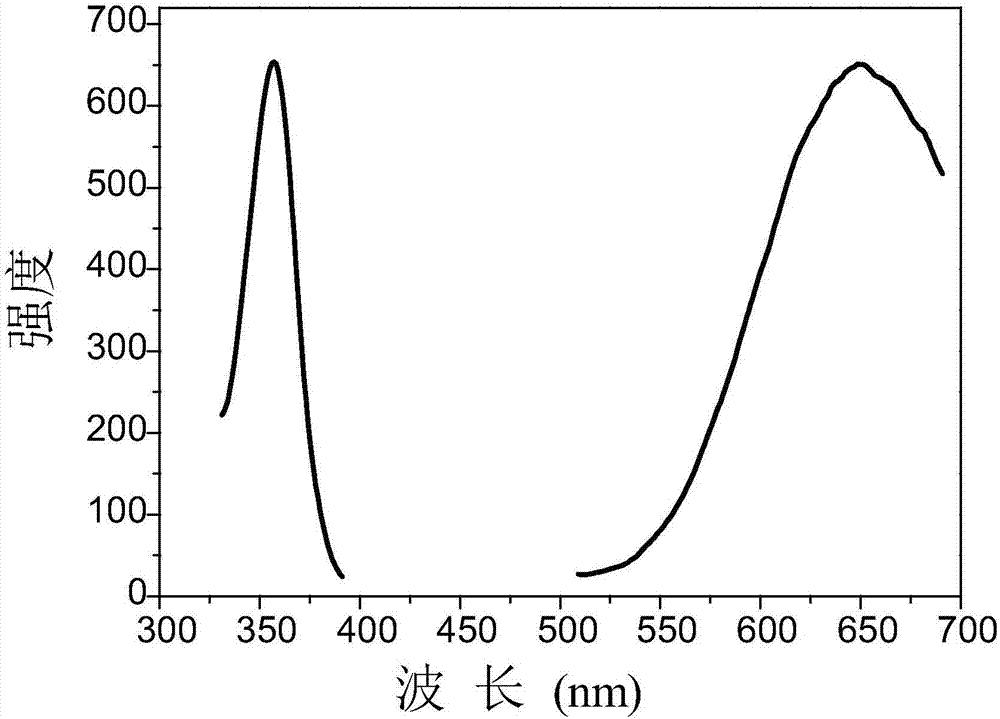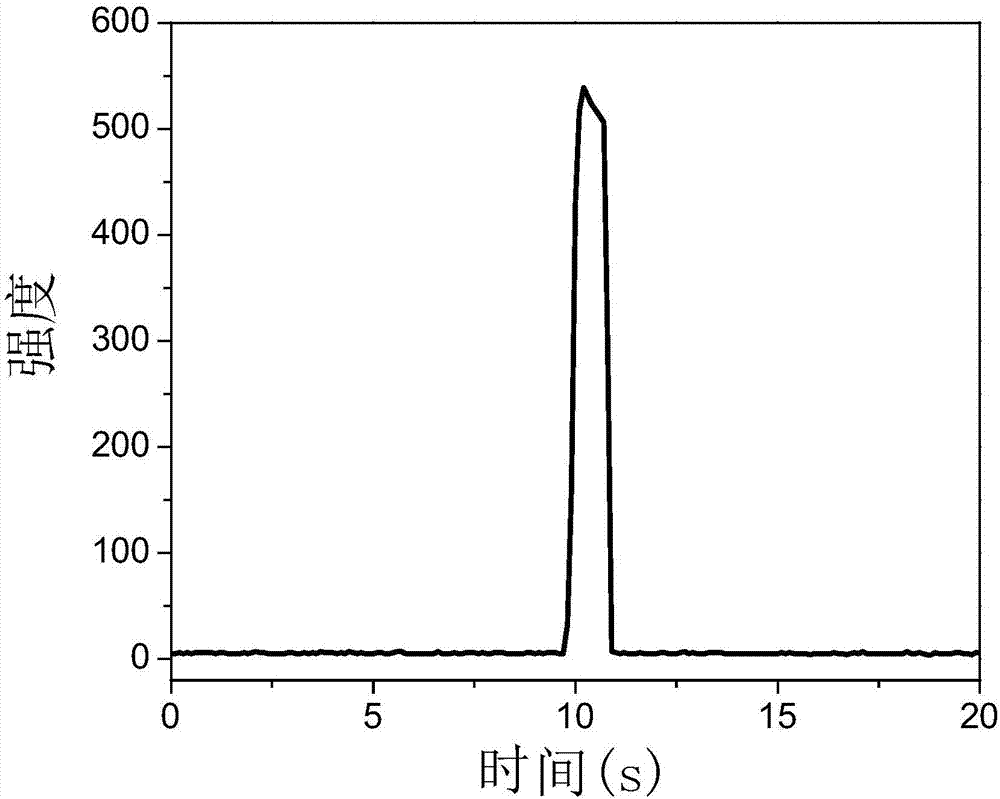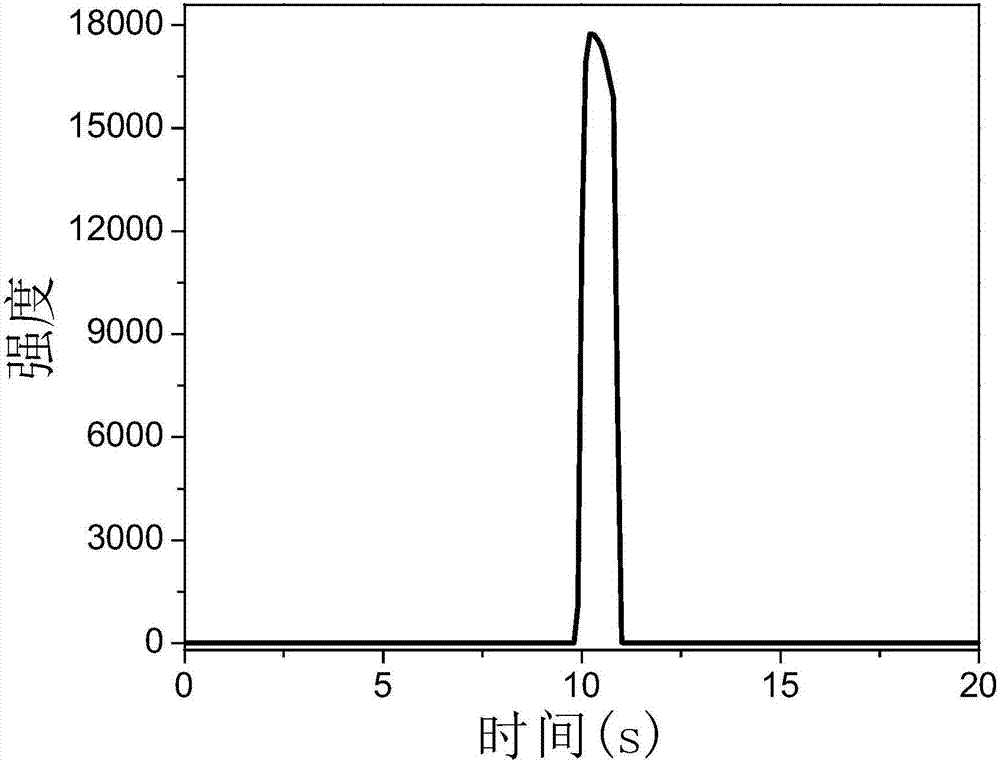High-quantum-yield electrochemical luminous gold nanometer cluster probe prepared by electrochemical reduction method
A gold nanocluster, electrochemical technology, applied in the nano field, can solve the problems of weak electrochemiluminescence intensity, less research on electrochemiluminescence sensing, etc., and achieves a green preparation method, good application prospects, and good reproducibility. Effect
- Summary
- Abstract
- Description
- Claims
- Application Information
AI Technical Summary
Problems solved by technology
Method used
Image
Examples
Embodiment 1
[0038]Add 0.6 mL of 0.5 mol / L sodium hydroxide and 0.4 mL of 20 mg / mL chloroauric acid solution to 4 mL of 0.08 mol / L N-acetyl-L-cysteine solution, mix After uniformity, they were placed in a 37°C constant temperature water tank and incubated for 3 hours. After the reaction, the reaction solution was purified by dialysis with a dialysis bag with a molecular cut-off of 3500 to obtain an aqueous solution of N-acetyl-L-cysteine-gold nanoclusters, which was freeze-dried to obtain N-acetyl-L-cysteine Acid-gold nanocluster powder. Take the above-mentioned N-acetyl-L-cysteine-gold nanocluster aqueous solution for fluorescence spectrum analysis, and the maximum excitation wavelength and emission wavelength can be obtained as 355 nm and 650 nm respectively (see figure 1 ).
Embodiment 2
[0040] Glassy carbon electrodes with a diameter of 3 mm were coated with 1.0 μm, 0.3 μm and 0.05 μm Al 2 o 3 The powder is polished to a smooth mirror surface, and then put in HNO in sequence 3 Solution (volume ratio of concentrated nitric acid to water is 1:1), absolute ethanol, ultrasonic cleaning in deionized water for 3 minutes, N 2 blow dry. Take 5 μL of N-acetyl-L-cysteine-gold nanocluster solution and drop it on the surface of the treated glassy carbon electrode, and dry it at room temperature to obtain N-acetyl-L-cysteine-gold nanocluster modification Glassy carbon electrode. Insert the above electrodes into 0.1 mol / L pH 7.4 phosphate buffer solution containing 0.1 mol / L potassium persulfate and 0.1 mol / L KCl. The step pulse method was adopted, the initial potential was 0 V, the pulse time was 10 s, the end potential was -2 V, and the pulse time was 1 s. The high voltage of the photomultiplier tube was set to 700 V, and the electrochemiluminescence signal generate...
Embodiment 3
[0042] A three-electrode system was used for electrochemical reduction. The N-acetyl-L-cysteine-gold nanocluster modified glassy carbon electrode was used as the working electrode, the platinum wire electrode was used as the counter electrode, and Ag / AgCl was used as the reference electrode. The electrode was inserted into 0.1 mol / L phosphate buffer solution with pH 7.4, and subjected to potentiostatic reduction with a reduction potential of -2.0 V and a reduction time of 5 minutes to obtain a reduced gold nanocluster probe-modified glassy carbon electrode. The prepared reduced gold nanocluster probe-modified glassy carbon electrode was inserted into 0.1 mol / L pH 7.4 phosphate buffer solution containing 0.1 mol / L potassium persulfate and 0.1 mol / L KCl. The step pulse method was adopted, the initial potential was 0 V, the pulse time was 10 s, the end potential was -2 V, and the pulse time was 1 s. The high voltage of the photomultiplier tube was set to 700 V to detect the elect...
PUM
 Login to View More
Login to View More Abstract
Description
Claims
Application Information
 Login to View More
Login to View More - R&D
- Intellectual Property
- Life Sciences
- Materials
- Tech Scout
- Unparalleled Data Quality
- Higher Quality Content
- 60% Fewer Hallucinations
Browse by: Latest US Patents, China's latest patents, Technical Efficacy Thesaurus, Application Domain, Technology Topic, Popular Technical Reports.
© 2025 PatSnap. All rights reserved.Legal|Privacy policy|Modern Slavery Act Transparency Statement|Sitemap|About US| Contact US: help@patsnap.com



